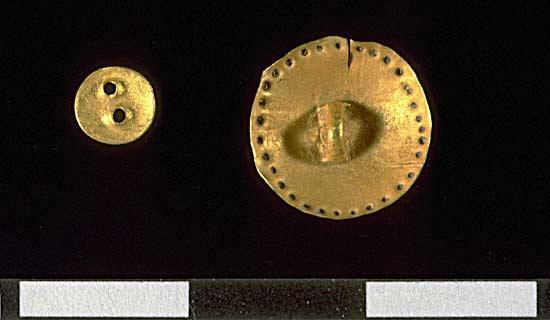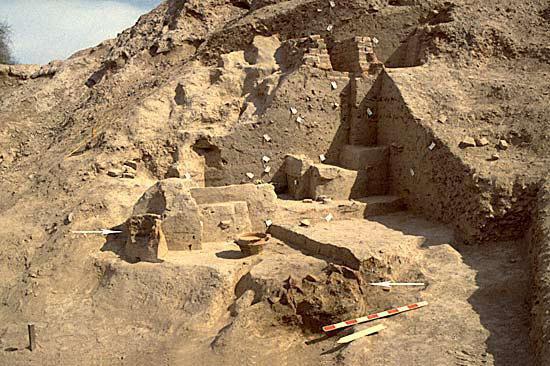As Dr. Rafique Mughal leads the first major excavation at the site of Ganweriwala in the Cholistan desert – an exceptionally exciting development in ancient Indus archaeology – it is well worth reviewing his earlier papers, many of which were published in Pakistani archaeological journals forty or more years ago. Ganweriwala, in Bahawalpur district of Punjab on the dry Ghaggar-Hakra river bed near the Indian border was discovered by Dr. Mughal in 1973. His book Ancient Cholistan (1997) describes his work in this largely unexplored and un-excavated area.
His focus in the wider origins and precursors to the ancient Indus civilization were clear in this paper (1980):
"It was amidst considerable theorising on the beginning of Indus Civilization that a significant breakthrough took place in mid-1950's. The excavations at Kot Diji in Khairpur district located opposite Moenjodaro on the left bank of the Indus by Dr. F. A. Khan, brought to light new evidence relevant to the early developmental phase of the Indus Civilization. There, below the mature Indus or Harappan culture comparable to Moenjo-daro and Harappa, & 17-foot thick cultural deposit yielded certain ceramic forms and decorative designs and other traits such as clay cart-frames and wheels, cones, animal figurines, triangular "cakes" and even fortifications that were previously attributed to the mature phase of the Indus Civilization. These early materials were dated by Radiocarbon between 3155 and 2590 B.C. (with MASCA corrections on half-life of 5730 years). With those early cultural materials, called "Kot Dijian" the early levels of the site of Harappa itself could be securely related where Sir Mortimer Wheeler had excavated in 1946 but disregarded the early materials as "alien" to the Harappan culture. But thanks to Dr. F.A. Khan's scientific excavation of Kot Diji, the new eividence has now proved to be crucial on the basic question of origins of the Indus Civilization. The most vital evidence was that the Kot Dijian occupation was not only six centuries or more earlier than the succeeding mature Harappan phase which immediately followed it there or elsewhere in the Indus Valley but it also contained the earliest known elements of the Harappan culture. The whole Kot Dijian assemblage belonged to an early developmental phase of the Indus Civilization in both chronological and cultural terms. Therefore, the early materials from Kot Diji, originally labelled as 'Kot Dijian,' must be considered Early Harappan as it is further substantiated by recent field researches in the Indus Valley," (pp. 4-5).
He emphasizes this point with discoveries in Amri, near Kot Diji which had "a distinct ceramic industry of its own," (p. 6), at Kalibangan. and we might add in numerous other places in both Pakistan and India, not to mention Dr. Mughal's own discoveries of sites along the Ghaggar-Hakra River and Ganweriwala in the 1970s. He was also right in stating "it is also evident that long-distance trade or exchange within the Greater Indus Valley and with outside was already established during the early Harappan period" (p. 8). Indeed the larger point often forgotten when delving into the uniqueness of ancient Indus cities that he concludes his paper with in italics is most important: "a degree of Pan-Indus cultural integration was already achieved before the emergence of large cities by the mid-third millennium B.C. The Indus Civilization in its mature form, therefore, grew out of these early cultural assemblages which all together constitute an early formative, or early urban phase of its development on the Indus soil" (pp. 9-10).
If anything, recent research in the years since this paper was written have suggested that there was great diversity in and around cities long before, during and after what we consider the height of Indus civilization as well as a certain uniformity in seals and material culture. There is no reason to suppose that the ancient Indus milieu thousands of years ago was any less diverse than now, making the interpretation of what we find most complicated. As well as a vast geographic interaction and trading sphere for the archaeologist to deal with, there were also multiple indigenous cultures to consider, all of whom interacted with each other more or less strongly. Just like today. Dr. Mughal was among the early Indus archaeologists to draw attention to this, and one cannot but hope that the excavations at Ganweriwala cast further light on these matters.
Images from excavations at Harappa:
1. Kot Diji phase gold sequins.
2. Kot Diji phase kilns.




